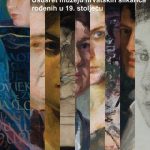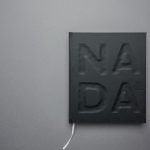The Meštrović Pavilion, situated on Trg Žrtava Fašizma (the Square of the Victims of Fascism), is the official seat of the Croatian Association of Artists (HDLU) and one of the iconic architectural landmarks in Zagreb. Its construction was completed in 1938, but the pavilion has been subjected to numerous modifications under multiple political regimes. Let’s delve into the timeline:
1930s
In 1932 emerged an initiative to build a monument in commemoration of king Peter I of Serbia (1844 – 1921), a ruler from the Karađorđević dynasty who was revered as the Great Liberator at the time. While the committee formed with the sole purpose of building the monument was conferring on specifics, the Association of Croatian Artists “Strossmayer” was procuring funds to build a new edifice that would house their official seat. The edifice was supposed to be built on Mažuranić square, but due to difficulties in obtaining the building permit for the intended site, a peculiar compromise was achieved. Instead of commissioning a sculpture in honour of King Peter, it was decided to build an edifice that would both serve as an exhibition space for the artists and represent a commemorative monument for the late king. The Foundation of the Home for the Arts of King Peter I the Great Liberator was formed.
According to orders from ‘the highest level’ , there was no official design competition. The honour of creating preliminary plans was awarded to Ivan Meštrović, the great Croatian sculptor, while the actual architectural project was carried out by the architects Harold Bilinić and Ladislav Horvat. The pavilion was built between 1934 and 1938, using more than 2500 tonnes of white stone from the quarry on Brač. It was a novelty when it came to gallery spaces – its circular plan and a dome made of glass and concrete were unparalleled at the time. It was a unique exhibition space.
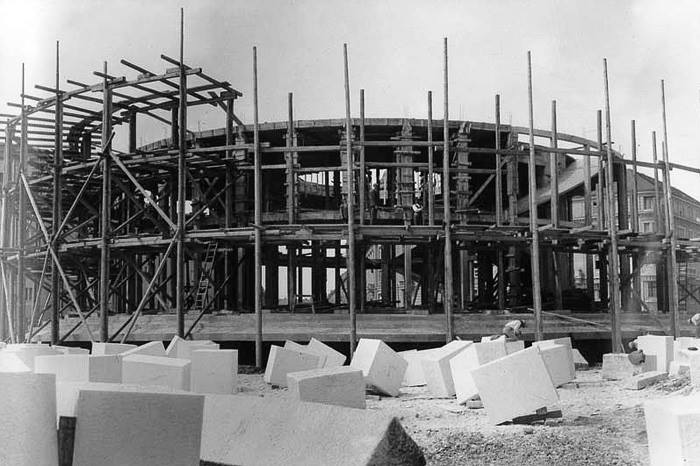
The foundation’s manifest was surprisingly idealistic in character, stating that the purpose of the building was to serve as a temple of visual arts and that exhibitions of all art forms were to be held without discriminating on the basis of content or stylistic tendencies. In 1938, the first exhibition called Half a Century of Croatian Art took place in the pavilion. A group of artists led by Ljubo Babić, not particularly pleased by King Peter’s name still being thrown around, boycotted the pavilion and held an anti-exhibition at the Croatian Music Institute. Meštrović later commented, in a delightful showcase of dialect that’s impossible to translate: “I was entrusted to build a monument. I didn’t want to make a steed with a natty rider – I set out to imagine a house that would be a home for the arts. Which I did, and my solution was accepted, and the house got built. Makes no sense to bicker over the sign on the door – what it’s going to look like, what it’s going to say. The sign can change, and the letters on it as well. Only the house will always remain in its place.” The following turn of events probably wasn’t what Meštrović had in mind.
1940s
As soon as the Independent State of Croatia was established, King Peter the Liberator promptly got kicked out of the picture. Ante Pavelić ordered for the pavilion to be turned into a mosque in August 1941. Three minarets were erected around the building, each measuring 45 meters in height. The interior was renovated and the walls covered in lines from Kur’an, skillfully executed by masters of Arabic calligraphy. The mosque was opened in August 1944. Four years later, the minarets were demolished, the edifice repurposed into a gallery, and the square renamed into the Square of the Victims of Fascism.
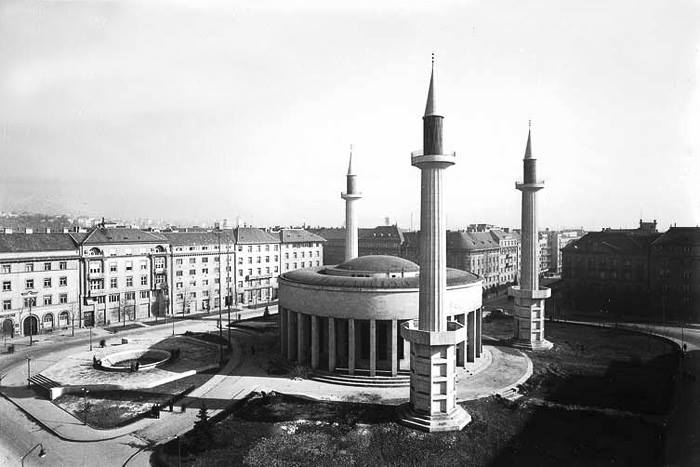
A large number of people living in Zagreb today weren’t even born in time to see the minarets, yet nowadays the pavilion is almost exclusively referred to as džamija (the mosque).
1950s
In 1949, the pavilion was repurposed once again, this time to house the Museum of the Revolution that was to display documents about the Partisan activities during World War II. The planned renovation was opposed by a group of architects, conservators and artists, who considered the exhaustive adaptation to be unnecessary and detrimental for a building erected to house a public cultural institution. Architect Vjenceslav Richter was appointed to design plans for the adaptation: he added another floor and new staircases in the interior, and constructed walls to conceal the circular form of the edifice. Richter’s designs weren’t made to modify the existing structure, but got attached to the building allowing it to pertain its original form. The Museum of the Revolution opened in 1955.
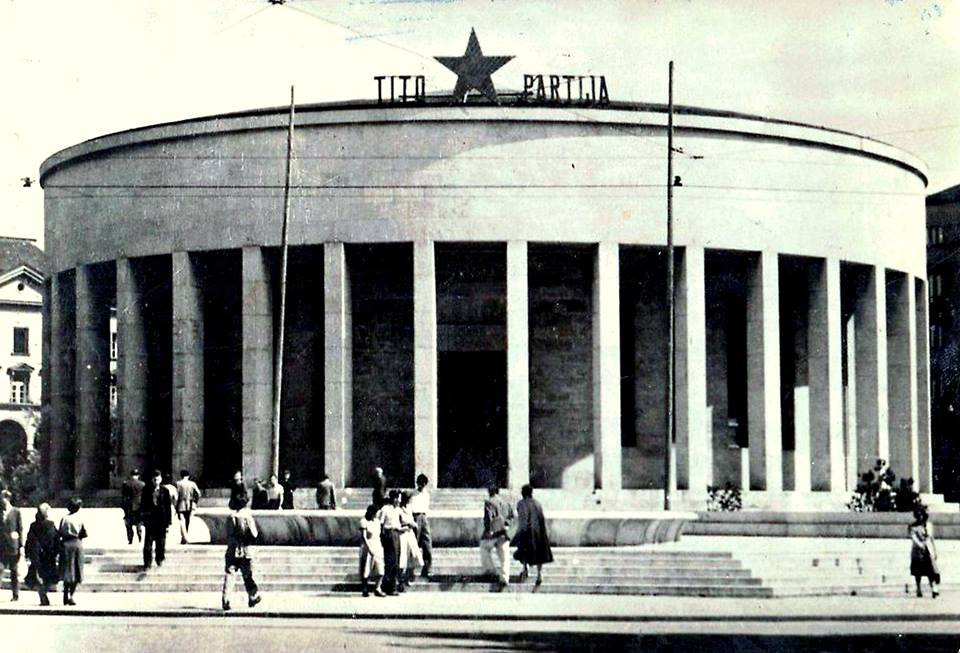
1980s – present day
In the mid-80s, an initiative was formed to move the Croatian Association of Visual Artists (HDLU) back into the pavilion. Following the 1990 exhibition titled “Documents – Arguments”, curated by HDLU and headed by Ante Rašić, the City Council of Zagreb granted permission to HDLU to move the official seat into the building. By 2003, as a result of the renovation project headed by the architect Andrija Mutnjaković, all later additions to the original structure were removed.
Nowadays the pavilion serves as the seat of HDLU who are a nongovernmental, non-profit and politically neutral union of visual artists. They organise up to 40 exhibitions and events each year with the aim to promote contemporary visual arts production.
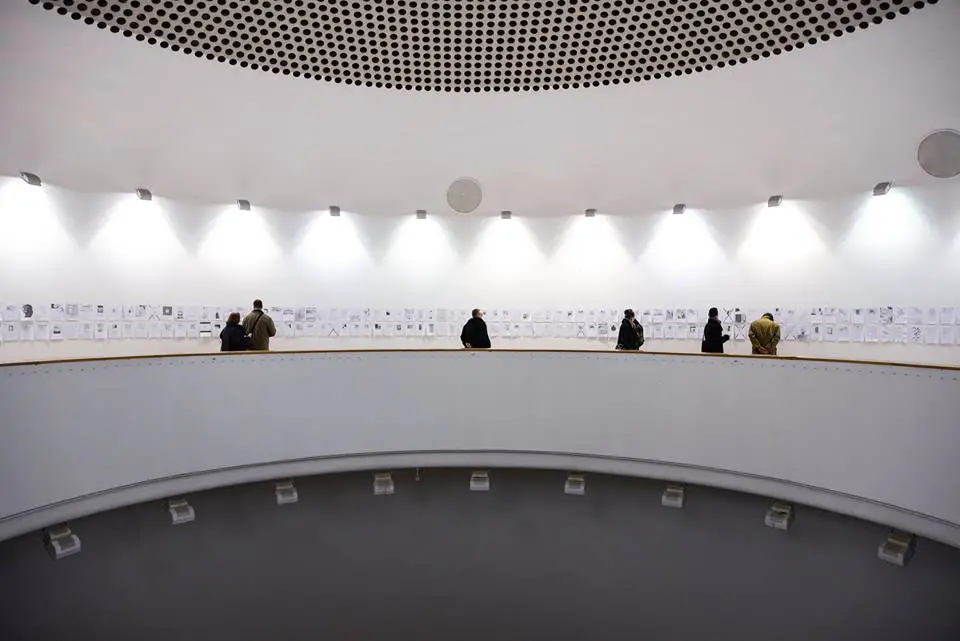
(Pavilion interior, source: HDLU Facebook)
No other building in Zagreb suffered in direct relation to politics as much as the Meštrović pavilion. It’s been repurposed and remodeled so many times it’s hard to keep track, showing how much the urban landscape of the city can change when affected by dominating regimes. Fortunately, the arts didn’t get the short side of the stick in the end, but one thing is certain: as long as the governing bodies use public goods as instruments to promote certain ideologies, culture will always take the toll.
Image source: Zagreb – kakav je bio nekada

